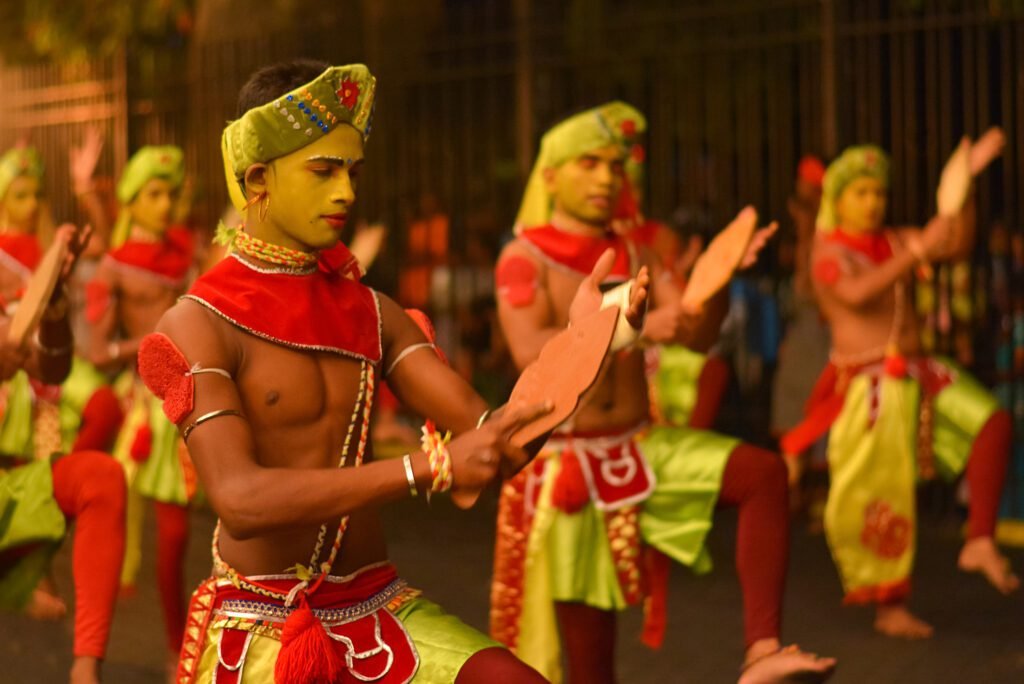Best time to visit Sri Lanka: A Year-round Destination
If you’re wondering when is the best time to visit Sri Lanka, look no further. Sri Lanka is a true year-round destination, with pleasant, stable temperatures thanks to its proximity to the equator. The country’s dual monsoons ensure that while one side of the country may be experiencing rain, the other side is perfect for beach activities. And if that’s not enough, Sri Lanka also offers a calendar full of festivals and holidays, providing visitors with a unique cultural experience almost every month. So whether you’re looking for a beach getaway, wildlife spotting, hiking adventures, or a chance to avoid crowds, this article will guide you on the best time to visit Sri Lanka.

This image is property of lp-cms-production.s3.amazonaws.com.
December to March is the best time to hit the beach
If you’re dreaming of a beach getaway in Sri Lanka, the best time to visit is from December to March. This period is considered the high season and coincides with the best weather in the south and west of the country. Popular beach destinations like Hikkaduwa and Mirissa are at their most idyllic during this time. The weather is warm and sunny, making it perfect for swimming, sunbathing, and enjoying water sports.
However, it’s important to note that the Maha monsoon season occurs from October to January, which means that the east coast, north, and the Ancient Cities can experience rain during this period. So, if you’re planning to visit these areas, it’s best to avoid the months of December to March.
Apart from enjoying the beautiful beaches, December is also a significant month for cultural events in Sri Lanka. The Adam’s Peak pilgrimage season begins in December and lasts until mid-April. Pilgrims from all faiths, as well as tourists, climb the sacred summit near Ella. It’s a unique and spiritual experience.
Furthermore, December brings Christmas celebrations in Sri Lanka. The country’s Christian community celebrates Christmas with enthusiasm, and you can expect to see festive decorations and events throughout the month. Other faiths also participate in secular events during the holiday season, adding to the vibrant atmosphere.
Moving into January, it’s the peak of the tourist season in Sri Lanka. While crowds may be at their largest, the fine weather in the south and west makes it an appealing time to visit. It’s also a month filled with major events and festivals. Duruthu Perahera in Colombo is a lavish festival of lights, dances, and parades celebrated to commemorate the first of Buddha’s visits to Sri Lanka. Galle hosts its annual literary festival, which features literary discussions and events in the city’s UNESCO-protected fort.
In February, visitor numbers remain high, especially with wintering Europeans seeking the warm and dry winter weather. Sri Lanka also celebrates its Independence Day early in the month with festivals, parades, fireworks, and sporting events held across the country. It’s a month filled with patriotic and lively celebrations.
March brings the festival of Maha Sivarathri, usually celebrated in late February or early March. Hindus commemorate the marriage of Shiva to Parvati with all-night vigils and various religious activities. It’s an important day for Shaivites, who make up the majority of Sri Lanka’s Hindus. The festival adds cultural richness to the already diverse Sri Lankan experience.
September to October and April are the best times for exploring the whole country
If you’re interested in exploring the whole country and want optimal weather with fewer crowds, September to October and April are the best times to visit Sri Lanka. These months fall between the two main monsoons and offer favorable weather conditions throughout the country.
During September, and sometimes even August, over 200 elephants gather in Minneriya National Park for several weeks. This phenomenon, known as “The Gathering,” is considered one of Asia’s great wildlife spectacles. It’s an incredible opportunity to witness these majestic creatures in their natural habitat.
October can be a bit unpredictable as it transitions from the fading Yala monsoon to the approaching Maha monsoon. Thunderstorms are common in many areas, but the east coast still offers excellent surfing conditions. However, it’s advisable to bring a raincoat if you’re visiting Sri Lanka in October.
The month of April is another excellent time to explore the entire country. It’s warm and dry across most of Sri Lanka, and the tourist season is winding down. This means accommodation prices are generally lower, and there are fewer crowds. April also features several notable festivals, such as Vesak Poya and Aurudu (New Year).
Vesak Poya is a two-day festival in May celebrated by Buddhists. Colorful lights adorn Buddhist homes, shops, and temples, creating a magical atmosphere. Aurudu, the Sinhala and Tamil New Year, is also celebrated in April. The festivities include traditional games, family gatherings, and an abundance of delicious food. It’s a unique cultural experience.
April is also a time when Christians celebrate Easter, which usually falls within this month. Despite Christians comprising only a small portion of Sri Lanka’s population, Easter is celebrated with enthusiasm, and you’ll see festive decorations and events throughout the country.

This image is property of lp-cms-production.s3.amazonaws.com.
May to August is the best time to avoid the crowds
If you prefer to avoid the crowds and enjoy lower prices, May to August is the best time to visit Sri Lanka. This period is considered the low season due to the Yala monsoon, which brings rain to the west and south of the country, as well as the Hill Country. However, there are still plenty of reasons to visit during this time.
May marks the beginning of the Yala monsoon, but it’s a great time to visit the North and the east coast. Jaffna, located in the North, offers a unique cultural experience, and the chilled-out resorts along the east coast, like Arugam Bay, are known for their laid-back surf scene. Accommodation prices are generally lower during this period, and you’ll encounter fewer crowds.
Despite the Yala monsoon, Sri Lanka hosts several must-see festivals during this time. Vesak Poya, mentioned earlier, takes place in May and illuminates the country with colorful lights. In July, another significant festival called Esala Perahera captivates the nation. The main procession takes place in Kandy, but smaller parades occur across Sri Lanka. Dancers, drummers, and stilt-walkers showcase their skills and create a vibrant spectacle.
August marks the end of the low season, with rains gradually easing. If you visit in August, consider heading to Jaffna, which hosts the Nallur Festival. This enormous and spectacular festival includes parades of juggernaut floats and displays of self-mutilation by entranced devotees. It’s a unique event that showcases the cultural richness of Sri Lanka.
Poya (full moon) days
It’s essential to be aware of the significance of Poya (full moon) days when planning your trip to Sri Lanka. On these days, which are national holidays, buses, trains, and accommodation tend to fill up quickly, particularly if the full moon falls on a Friday or Monday. It’s advisable to book your transportation and accommodation well in advance.
During Poya days, the sale of alcohol is prohibited, and many bars may be closed. However, some hotels discretely provide cold beer “under the table.” These holidays offer a chance to immerse yourself in the local culture and observe religious observances across the country.
When visiting Sri Lanka, it is worth being familiar with the Poya days and planning your itinerary accordingly. These holidays provide insights into the spiritual and cultural traditions of the country and allow you to experience a unique aspect of Sri Lankan life.
In conclusion, Sri Lanka truly is a year-round destination with something to offer in every season. December to March is perfect for beach lovers, while September to October and April provide ideal weather for exploring the entire country. If you prefer to avoid crowds, May to August is a great time to visit. Whether you’re captivated by cultural festivals, wildlife spectacles, or simply seeking relaxation on pristine beaches, Sri Lanka has it all. Plan your visit accordingly and prepare for an unforgettable experience.

This image is property of lp-cms-production.s3.amazonaws.com.




